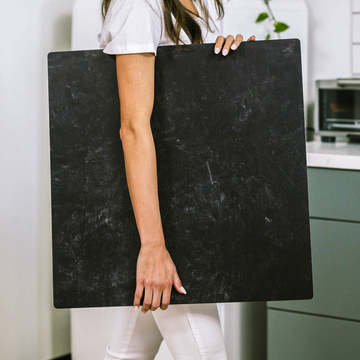Ask any food photographer for their go-to backdrop, and you’ll get a list of surfaces: classic wood planks, cool marble, dramatic slate. But if you want to create images that don’t just look good, but sell-and savor-the food, you have to look beneath the surface. The right backdrop isn’t just about style; it’s about science, precision, and how a single piece of material can shape your workflow and your story.
What if your choice of backdrop subtly changed the look-and even the perceived taste-of the food you feature? It does. Here’s what most guides miss, and how you can use those inside secrets to elevate your shots from amateur to irresistible.
The Color Science You Never Noticed
Have you ever noticed your food looks flat, too orange, or even slightly blue in photos? This isn’t just a lighting issue. Many printed or inexpensive surfaces reflect light unevenly across the color spectrum, an effect called metamerism. That means your colors shift from one light source to another, leaving you with odd skin tones or unappetizing food hues.
The best backdrops are engineered to reflect a broad, true-to-life spectrum-so whites stay clean and food colors remain rich and natural, even if you change your lighting setup midday.
Texture: Not Just for Looks
Everyone loves a backdrop that looks like authentic stone or aged wood. But texture impacts much more than style: it fundamentally changes how light falls across your frame. Smooth or glossy “faux” finishes often create harsh reflections that distract from your hero dish, especially when styled under window light or with flash.
True high-end surfaces feature a natural microtexture that diffuses light in a soft, believable way. This little detail helps your food look three-dimensional and inviting-just like what you’d see in a top cookbook or magazine.
Work Smarter, Not Harder: Surfaces for Real-Life Shooting
If you’ve ever battled with a heavy slab of wood or a warped kitchen tile, you know setup can be half the battle. The reality for most creators-especially if you’re shooting in your living room or at the kitchen table-is that you need surfaces that are lightweight, rigid, and easy to move around.
Consider modular backdrops that snap into stands or transition easily between flat, upright, and corner setups. Not only does this save time, it also opens up new ways to style and shoot, whether you’re aiming for vertical Pinterest posts or immersive lifestyle scenes.
Cleaning Up: The Hidden Power of Non-Porous Backdrops
Most food photography involves, well, food mess. Real wood and stone can absorb oils, juices, and sauces-sometimes permanently. That’s why non-porous, wipe-clean backdrops aren’t just convenient; they’re essential if you want gear that lasts.
Surfaces with special coatings hold up to repeated styling and spills without losing their matte finish or natural look. The flexibility to switch from a salad shoot to chocolate cake without a deep clean in between is a game-changer for busy creators.
The Appetite Effect: Why Surface Color Matters
Here’s one of the most overlooked details: the subtle warmth or coolness of your backdrop dramatically influences appetite appeal. Studies have found that off-white, warm gray, and gentle beige surfaces make food appear tastier and fresher, as these colors gently reflect flattering tones onto your subject.
A stark white or jet-black backdrop, on the other hand, can sap vibrancy-making even a perfect slice of cake feel less inviting. Favoring slightly warm neutrals isn’t just a style choice; it’s psychology in action.
Modern Versatility: Go Beyond the Flat Lay
The world of food and product photography is moving beyond the classic flat lay. With social media demanding multiple formats-reels, stories, verticals, and more-your backdrops should work just as hard as you do. Systems that offer modular corners, seamless “S-curves,” or upright panels let you create complex setups in small spaces, giving your photos a polished, editorial feel.
This flexibility means you can stage a “kitchen wall” today, a “restaurant table” tomorrow, or run an entire shoot in a tiny apartment-all with the same set of lightweight surfaces.
How to Choose the Best Food Photography Backdrop:
- Priorsitize true-to-life spectral reflection for perfect colors in any light.
- Look for real microtexture-not just printed grain-for soft, natural highlights.
- Choose lightweight, rigid materials for easy setup and more diverse shots.
- Ensure non-porous, matte finishes for durability and easy cleaning.
- Favor slightly warm neutrals for universal, appetite-boosting appeal.
- Consider modularity for creative, space-efficient styling.
You don’t need dozens of trendy backdrops to stand out. When you choose surfaces designed with science, psychology, and workflow in mind, every shot becomes a pleasure-both for you and your audience.
Have a favorite hack, or a specific challenge shooting at home? Share your story in the comments and let’s make every meal-or product-look unforgettable.



